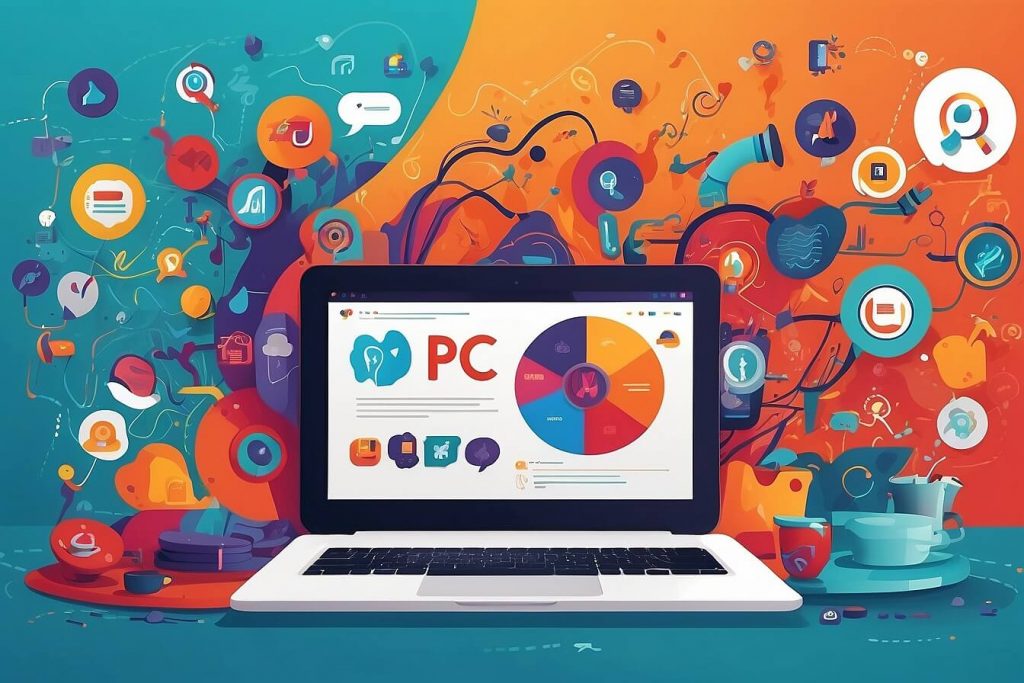The Role of Artificial Intelligence in Crafting Compelling Messages
Crafting compelling messages is essential for businesses to cut through the noise and capture the attention of their target audience. And with the help of artificial intelligence (AI), this process has become even more efficient and effective. AI, powered by machine learning algorithms, is revolutionizing the way we approach ad copy optimization. By analyzing vast amounts of data, AI can uncover insights and patterns that humans may miss, allowing marketers to craft messages that resonate with their audience on a deeper level. One key element that AI brings to the table is its ability to analyze consumer behavior. By understanding how consumers think and act, AI can help marketers identify the most effective messaging strategies. Leveraging machine learning, AI can predict which emotions are most likely to trigger a response from a particular audience segment. With this knowledge in hand, marketers can tailor their ad copy to evoke the desired emotional response, whether it be excitement, curiosity, or a sense of urgency. By focusing on the emotional appeal, marketers can create messages that truly connect with consumers, driving higher engagement and conversion rates.Key Elements of Effective Ad Copy Optimization
Crafting effective ad copy is an art form that requires careful consideration and strategic planning. To optimize your ad copy and ensure it resonates with your target audience, there are several key elements that must be taken into account. Firstly, clarity is of utmost importance. Your ad copy should communicate your message in a concise and straightforward manner. Avoid using complex language or industry jargon that may confuse or alienate your audience. Instead, focus on relaying your message in a way that is easily understandable and relatable. Secondly, relevance is key. Your ad copy should not only be clear but also highly relevant to your target audience. Tailor your messaging to address their needs, wants, and pain points. By understanding your audience and their motivations, you can craft ad copy that speaks directly to them and resonates on a deeper level. In addition, incorporating a sense of urgency can also be a powerful element in ad copy optimization. By creating a sense of scarcity or time-bound offers, you can encourage your audience to take immediate action. This can be achieved through strategies such as limited-time discounts, exclusive offers, or highlighting the benefits of acting quickly. Furthermore, it is crucial to create a strong call to action (CTA) in your ad copy. A clear and compelling CTA prompts your audience to take the desired action, whether it’s making a purchase, signing up for a newsletter, or requesting more information. Use action-oriented language and strong verbs to create a sense of urgency and entice your audience to take the next step. Lastly, incorporating social proof and testimonials can further enhance the effectiveness of your ad copy. People are more likely to trust and engage with brands that have positive reviews and endorsements from others. Include snippets of customer feedback or testimonials that highlight the benefits or success stories associated with your product or service. By keeping these key elements in mind – clarity, relevance, urgency, strong CTAs, and social proof – you can optimize your ad copy to effectively capture your audience’s attention and drive the desired actions.Leveraging Machine Learning for Targeted Messaging
Machine learning has revolutionized the way we approach targeted messaging in advertising. By leveraging advanced algorithms and data analysis, marketers can now deliver more personalized and relevant content to their target audience. This method, known as leveraging machine learning for targeted messaging, allows businesses to maximize their ad effectiveness and drive better results. In this article, we will explore the power of machine learning in crafting compelling ad copy and provide actionable steps for successful implementation. 1. Understand your audience: The first step in leveraging machine learning for targeted messaging is to gain a deep understanding of your audience. Take advantage of the vast amount of data available, from demographics to browsing behavior, to uncover insights about your target market. By segmenting your audience into distinct groups, you can tailor your messaging to address specific needs, preferences, and pain points. Machine learning algorithms can help identify patterns and trends within your audience data, allowing you to create more personalized and targeted ad copy that resonates with different segments. 2. Craft relevant and compelling content: Once you have a clear understanding of your audience, it’s time to craft relevant and compelling ad copy. Use the insights gained from machine learning algorithms to inform your messaging strategy. Focus on creating content that is not only visually appealing but also speaks directly to the desires and motivations of your target audience. Incorporate LSI keywords, or latent semantic indexing keywords, to improve the SEO ranking of your ad copy and increase its visibility. Remember to keep your messaging concise, clear, and aligned with your brand identity to ensure consistency across all touchpoints. 3. Continuously optimize and iterate: One of the key advantages of leveraging machine learning for targeted messaging is the ability to continuously optimize and iterate your ad copy. Monitor the performance of your ads and rely on data-driven insights to make informed decisions. Test different variations of your ad copy, such as headlines, calls to action, and visuals, to identify what resonates most with your audience. Implement A/B testing methodologies to compare the effectiveness of different messaging approaches. By constantly analyzing and refining your ad copy based on user engagement and conversion data, you can improve the effectiveness of your campaigns over time. By leveraging machine learning for targeted messaging, marketers can tap into a wealth of valuable insights and create ad copy that truly resonates with their audience. From understanding your audience to crafting compelling content and continuously optimizing, these steps will help you harness the full power of machine learning in your advertising efforts. Stay tuned for the next section of this article, where we will explore strategies for enhancing emotional appeal in ad copy.Strategies for Enhancing Emotional Appeal in Ad Copy
The emotional appeal of ad copy is a crucial element in capturing audience attention and driving conversions. By tapping into the power of emotions, advertisers can create a deeper connection with potential customers, increasing their likelihood of taking action. In this section, we will explore strategies for enhancing emotional appeal in ad copy, ensuring that your messages resonate with your target audience. To effectively enhance emotional appeal in your ad copy, it is vital to have a solid understanding of your target audience. Conduct thorough research to identify their needs, desires, and pain points. By knowing what makes them tick, you can tailor your messages to evoke the emotions that will resonate most strongly with them. The words you choose in your ad copy can have a profound impact on the emotional response from your audience. Use strong, evocative language that speaks directly to their desires or challenges. Incorporate action verbs and sensory details to create a vivid and engaging experience for the reader. Remember, the goal is to provoke a specific emotional response that will drive them to take action.Analyzing Consumer Behavior with AI for Optimized Messaging
Understanding consumer behavior is crucial for creating effective ad copy that resonates with your target audience. By analyzing consumer behavior with the help of artificial intelligence (AI), marketers can gain valuable insights into what drives consumer actions and preferences, enabling them to optimize their messaging strategies. AI-powered analytics tools can sift through massive amounts of data to identify patterns and trends in consumer behavior. From online browsing habits to purchase history, AI can track and analyze various data points to provide marketers with a deeper understanding of their target audience. This data-driven approach allows marketers to segment their audience based on their preferences, demographics, and buying behavior, leading to more personalized and relevant messaging. To optimize your messaging using AI, here are a few key steps to follow: 1. Collect and analyze data: Start by collecting relevant data points such as browsing behavior, purchase history, and social media interactions. Utilize AI-powered analytics tools to analyze this data and identify patterns and insights about your target audience. 2. Identify audience segments: Once you have analyzed the data, segment your audience based on their preferences, demographics, and behavior. This will allow you to create messaging that is tailored to each segment’s specific needs and interests. 3. Craft compelling messages: Armed with insights about your audience, use AI-powered tools to generate ideas and suggestions for crafting ad copy that resonates with each segment. Experiment with different messaging styles, tones, and emotional appeals to see which ones drive the desired response. 4. Test and iterate: Don’t settle for a one-size-fits-all approach. Continuously test and iterate your ad copy based on the real-time feedback and insights provided by AI. This iterative approach will help you refine your messaging and optimize it for maximum impact. By leveraging AI to analyze consumer behavior and optimize your messaging, you can create ad copy that effectively engages and resonates with your target audience. With a deeper understanding of your audience and the ability to personalize your messaging, you can drive better results and improve your ad campaign’s return on investment.Personalization Techniques in Ad Copy Optimization
In a crowded digital landscape, personalized messaging has become crucial for brands to cut through the noise and connect with their target audiences. Personalization techniques in ad copy optimization enable businesses to deliver tailored messages that resonate with individual customers, ultimately driving higher engagement and conversion rates. By leveraging the power of artificial intelligence (AI) and data analysis, marketers can now craft highly personalized ad copy that speaks directly to the unique needs and preferences of their customers. To Enhance Personalization in Ad Copy Optimization:- Utilize Customer Data: To create personalized ad copy, it is essential to collect and analyze relevant customer data. By understanding consumer behaviors, preferences, and purchase history, marketers can customize their messaging to address specific pain points and showcase the most relevant product features.
- Dynamic Insertion: Take advantage of AI-powered dynamic insertion technology to dynamically insert personalized content into your ad copy. This technique allows you to showcase individualized elements such as the customer’s name, location, or recent interactions with your brand, making the ad feel more tailored and relevant.
- Segment and Target: Instead of treating your entire audience as a homogenous group, segment them into smaller, more specific groups based on demographics, interests, or behaviors. This segmentation allows you to create unique ad copy that speaks directly to each subgroup’s specific needs and desires.
- A/B Testing: Experiment with different variations of your ad copy to determine which personalized elements resonate best with your target audience. By systematically testing and analyzing the performance of different versions, you can refine and optimize your ad copy for maximum impact.
- Refine and Optimize: Continuously monitor the performance of your ad campaigns and make adjustments based on the insights gained from data analysis. Optimize your personalized ad copy to maximize engagement, conversion rates, and overall campaign success.




